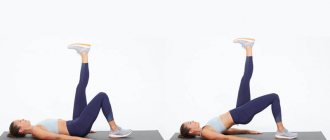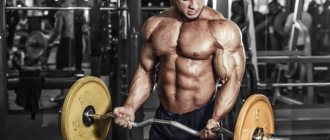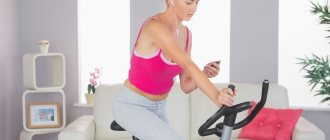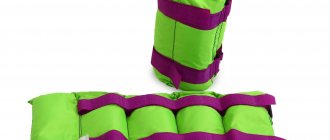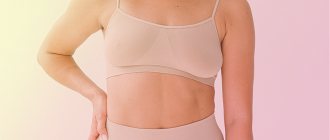Home ▸ Articles ▸ Workouts ▸ How to Do Single Leg Romanian Deadlifts Like a Pro
Some trainers will tell you that there are no required exercises. Because there are many other movements that will give you almost the same results as classic squats and push-ups.
However, if you suggest removing the Romanian Deadlift (RDL) from a trainer's program, you may start an argument that will send the barbells flying, since the single leg RDL is seen as a staple in functional strength training and is, in fact, indispensable for muscles, mobility and general fitness.
What is a Romanian Single Leg Deadlift?
You probably already know what a deadlift is. There is a barbell on the floor and you bend over to lift it. You start in the finishing position of a classic deadlift (standing tall, hips locked) and then bend your hips back, allowing your knees to bend until you feel your hamstrings stretch. The Romanian deadlift is a one-sided version of this movement.
Like other deadlifts, the single-leg RDL is a hinge movement—the primary training effect comes from hip flexion and extension. Single leg RDL can be done with a barbell, one or two dumbbells/kettlebells, a steel mace, a sandbag, or just about any other training tool you like.
You stand on one leg, hold a weight in one (or both) hands, and bend your hips back while maintaining a straight spine. The movement works the entire back side of the body (called the posterior chain), developing balance and improving mobility in the hips.
Due to its versatility, the Romanian single leg deadlift can be used in any training program, from warm-up to final workout.
What muscles does the Romanian deadlift work?
Let's consolidate all of the above. The main muscle group when performing the Romanian deadlift is:
Gluteus maximus muscle. It occupies the largest area of our pelvis. And it is the main muscle responsible for hip extension.
Gluteus medius. Also gets a load. Helps the gluteus maximus. And is a leg stabilizer.
It is to develop these muscle groups that we set ourselves the task when performing the Romanian deadlift
Therefore, try to focus all your attention on their work. . In addition to the main muscles, there are secondary ones:
In addition to the main muscles, there are secondary ones:
Back of the thigh. This includes the biceps femoris, semitendinosus and semitransversus muscles. In this exercise they receive very little load. Acting also as hip stabilizers.
Quadriceps. Also loaded to a minimum. And the hip stabilizes.
Back muscles. These include the lats, trapezius and spinal extensors. The complex focuses on maintaining weight and extending the back. The spine is stabilized in an even position.
Advantages of Romanian Single Leg Deadlifts over Regular Single Leg Deadlifts
Traditional double leg deadlifts are a great workout for the glutes and hamstrings and build overall muscle strength, size, and power. Although the Romanian single leg deadlift cannot be performed with as much weight as the classic deadlift due to the less stable position in which it is performed, it does have a number of other benefits that the classic deadlift does not have. At the very least, the risk of injury during execution is reduced.
Balance and coordination
By standing on one leg, you activate the muscles from your hip to your foot to prevent you from falling. On high-rep sets, you may not even notice your feet are burning from single-leg RDLs as you struggle to maintain your balance.
Not only are you training single-leg stability, which is especially important for sports where you run and jump, you're also training your hip joint. Once you learn to flex and extend your hips more powerfully, one leg at a time, you'll immediately progress to running faster, jumping higher, and changing direction faster.
Stronger posterior chain
The single leg RDL works the same muscles as any other deadlift variation, so you know you're getting a great workout for your glutes, hamstrings, latissimus dorsi, and erector spinae. But you'll also be training them through a greater range of motion than you would with a bilateral deadlift.
The arc of motion of the single leg lift allows your hips to flex further, activating more of your hamstrings. So you compensate for the weight loss with range of motion, making RDL a great choice for a muscle building program.
Increased mobility
Because you can move through a greater range of motion, single-leg RDLs are a great exercise for improving hip mobility and stretching your hamstrings. Trainers often prescribe this bodyweight exercise as a warm-up to stretch the hamstrings before doing squats or regular deadlifts.
This is also an excellent exercise for rest days, that is, recovery after training. By the way, standing split poses in yoga are basically Romanian deadlifts on one leg.
Improved posture and body mechanics
Like yoga, single-leg RDL can improve the way you move and carry your body, helping you avoid injuries to the lower back while lifting weights.
You can fix your back incorrectly and lift the barbell without realizing how harmful it is. If you don't brace your back correctly during the single-leg Romanian deadlift, you'll know right away. You will feel it on your back and lose your balance. So single leg RDL is a great learning tool.
This exercise also promotes good posture by pushing your shoulders back, which makes all your lifts more efficient and safer (and makes you look stronger and healthier).
Core Stabilization
When you stand on one leg, your body immediately feels that it is not okay. If you begin to bend at the hips so that your torso moves towards the floor, it will tend to rotate to a side that is not supported by the leg underneath it.
Your core muscles have to tighten a lot to prevent this rotation, so the single-leg RDL is a very important exercise in addition to moving your legs and back. When you develop the stability to resist rotation when it is not required, you take a giant step toward preventing lower back injuries.
Muscle balance is restored
Many people avoid unilateral training because it is challenging (and not as ego-soothing since you can't work as hard as when you lift both arms or legs at the same time). As a result, they develop muscle and strength imbalances, meaning the stronger limb takes over the weaker one.
This is especially common in the lower body, where you may see your hips shift to one side when you squat or deadlift, or you can do 10 lunges on one leg but can only do eight good reps on the other. Single leg RDL helps identify these imbalances and correct them so that both sides of the body become (at least nearly) equally strong.
Analysis of the exercise
Anatomy of exercise - which muscles work
Main muscles involved:
- gluteal muscles (mainly the gluteus maximus),
- muscles of the back of the thigh (femoral biceps),
- long back muscles.
Accessory muscles:
- trapezoidal,
- soleus and gastrocnemius muscles,
- muscles of the forearms,
- lats,
- abdominal Press.
Benefits of Exercise
- Can serve as an element of a home training system.
- Due to the wide range of projectile weights, it is possible to flexibly vary the load value.
- More anatomical movement and reduced load on the lower spine due to the comfortable “lateral” arrangement of the implements.
- Unlike classic deadlifts, it does not require the purchase and use of additional equipment accessories such as straps and a belt.
Flaws
- Monitoring the correct movement technique is complicated due to the asymmetrical load that dumbbells provide.
- The total weight of the weight is always lower than in the exercise version with a barbell.
Preparing for the exercise
The Romanian dumbbell deadlift is not a competitive exercise and therefore does not require special equipment as such. However, when performing deadlifts, it is advisable to use shoes with flat, rubberized soles that provide good traction with the floor surface.
We recommend reading: Lack of sun and vitamin D
You should not start doing deadlifts without first preparing your muscles. Following the general warm-up block, perform stretching of the thigh muscles, 2 sets of hyperextensions without weights, and 2 warm-up sets of the exercise itself with small “nominal” dumbbells (for experienced athletes, the approach to working weights should be carried out according to the principle of a straight pyramid).
Correct position
- The movement begins from the top position when the body is in a vertical position.
- Both when bending and during the lifting phase, the back maintains a flat position with a slight natural bend in the lumbar region. In this case, the head is kept in line with the spinal column.
- Abduction of the pelvis when lowering the projectile down is critical to maintaining the correct form of movement.
- In all phases of movement, the projectiles are in light contact with the lateral surface of the thighs and lower legs.
- Lifting the weight from the bottom position is performed by the joint effort of the hamstrings and gluteal muscles.
- The “depth” of the tilt is determined individually and is limited by the flexibility of the athlete. Ideally, it should correspond to a position of the torso parallel to the floor at the bottom point of the movement.
- A slight and “fixed” bend in the knee joint helps reduce tension in the popliteal ligaments, making the exercise more comfortable and less traumatic.
- As with any deadlift variation, the weight in this exercise should be concentrated in the heels.
Errors
- Lumbar rounding.
- Excessive flexion of the knee joint.
- Abduction of dumbbells from the surface of the thigh.
- Straightening the knees “locked.”
- “Overextension” in the back when returning to the starting position.
Efficiency Tips
- While performing rows at the top of the amplitude, additionally contract the gluteal muscles to increase the training effect on them.
- Experienced athletes can be advised to place the toes of their feet on a slight elevation (for example, placing barbell discs under the toes), which will allow them to achieve a stronger stretch of the femoral muscles.
- You need to bend as low as your flexibility allows while maintaining a clear arch in your lower back.
Inclusion in the program
The Romanian deadlift can be introduced into a training complex on a “basic” basis, that is, it may well serve as a key exercise in training the hamstring muscles. For a complete big workout, complement your rows with lunges, glute bridges, or machine leg curls.
Moreover, in women's training, the exercise is often performed in a multi-repetition format - from 12 to 15 repetitions. In men's programs, the nature of the work is more “strength”, therefore it assumes an average volume of approaches - from 6 to 10 repetitions.
Calculate your ideal sports weight!
Inexperienced athletes should start with light weight dumbbells, which will allow them to properly practice technique and consolidate motor skills. In the future, the weight of the burden must necessarily increase, obeying the principle of progression. However, the loads should always objectively correspond to the athlete’s state of health and his training experience.
Contraindications
- For serious lumbar injuries, it is recommended to exclude the Romanian dumbbell deadlift from the training program.
- If it is still difficult for you to keep your back in the correct position, take a break from the power movement for a while and work on stretching.
- If there is any discomfort in the back that occurs when performing deadlifts, the workout should be stopped.
How to replace the exercise
Experienced athletes can use Romanian deadlifts with a barbell as an alternative to dumbbell rows; less experienced athletes can use a kettlebell as a weight.
Interesting Facts
Fact 1: The Romanian weightlifter Nicolae Vlad is considered the “discoverer” of the exercise. Actually, later the craving received its name precisely from the nationality of the author.
Fact 2: In 2021, American scientists conducted a study (the results of which were published in the Journal of Strength and Conditioning Research), which showed the high effectiveness of performing Romanian deadlifts for training the hamstrings.
Thus, according to electromyography data, the long head of the biceps femoris muscle at the time of performing the Romanian deadlift shows maximum bioelectrical activity in comparison with other exercises.
How to perform a Romanian single leg deadlift. Step-by-step instruction
Step 1: Hold a dumbbell or kettlebell in your right hand and stand on your left foot. Lower your shoulder blades down and together, making your chest into a wheel, and tuck your tailbone slightly so that your pelvis is parallel to the floor.
Step 2: Extend your left arm to the side and make a fist to help you maintain your balance. Take a deep breath and tighten your core, pulling your ribs down and locking them in place.
Step 3: Begin bending your hips back so that your torso moves towards the floor. Focus your gaze on the floor so as not to bend your neck. Keep your head, spine and pelvis in line as you move, and bend your left knee if necessary. Your right leg will naturally extend behind you—squeeze your buttocks on that side as you do.
Step 4: Try to keep your hips level with the floor, but it's okay if your right toes turn outward a little. Maintain a proud chest position—the weight will try to pull your shoulders forward, so fight to keep them pulled back and down. Lean as far as possible without losing your balance. You should feel a stretch in the hamstrings of your working leg.
Step 5: Squeeze your glutes as you come back, widening your hips until you straighten. You can touch your right leg down for a moment if you need to regain your balance, then begin the next rep.
The most common mistakes when performing the exercise:
- Twisting your hips to one side as you bend them back. Think about pulling yourself down using your hip flexors (the muscles on the front of your thigh that lift your leg up) so that your hips are bent like a hinge. Your hips and shoulders should be pointing straight ahead of you throughout the exercise.
- Rounding the lower back. This is an absolute no. Keep your back straight at all times with your core engaged.
- Standing on your tiptoes and rocking on your heels may indicate tightness in your hips.
- Twisting the torso to reach the weight to the floor. Your shoulders should remain level with your hips.
Expert advice
“Your body weight should be centered in the center of your feet,” says Jim “Smitty” Smith, co-founder of CPPS certification and owner of Diesel Strength & Conditioning. - To do this correctly, your leg should be arched so that it can provide maximum stability. Before you start your set, try to “screw” your foot into the floor. Turn it down as if it were a screw and the floor was wood - don't let the leg rotate or roll over, but make it feel tense and deeply rooted in the floor."
“Keep your toes on the ground,” Smitty says. — The arch in your leg should rise. If you need help feeling what it feels like when your arch is engaged, keep your heel on the ground and lift your toes as high as possible. As you lower your toes back down, try to pull them toward your heel. Your leg should arch a lot and you will feel confident.”
Barbell technique
1.
Grasp the bar, located on the racks at the level of the pelvis, evenly with a medium grip and remove it from the racks, hold it with straight arms.
2.
Shift your body weight to your right foot, keeping your knees slightly bent.
3.
Lift your left foot off the floor and move your heel back slightly without touching the floor.
4.
Squeeze your shoulder blades together to stabilize your thoracic region and tighten your abdominal muscles, keeping your lower back in a natural arch.
5.
As you inhale, slowly lean your body forward, lowering the bar along your hips in a vertical line. The knee of the supporting leg bends slightly and allows you to move the pelvis back a little, transferring the body weight to the heel. Lower the bar just below the knee, selecting an individual range of motion depending on the elasticity of your own muscles.
6.
When bending, the free leg, bent at the knee, is pulled back along the line of the spine. It is important that when bending forward, the pelvis is so stable that the ilia are constantly in the same plane, that is, the pelvis and torso do not roll over to one side or the other.
7.
As you exhale, tensing your gluteal muscles and all stabilizers, rise up a little faster, also keeping the bar closer to your leg. While straightening your torso completely, keep your free leg suspended.
8.
Thus, perform the required number of times on one leg and immediately change to the other side, performing the same number of repetitions.
How to Use the Romanian Single Leg Deadlift in Your Workouts
As mentioned above, single-leg RDL fits well into your warm-up routine. You can also use it as a main exercise in your strength training.
Let's say you're doing a full body workout consisting of presses, deadlifts, squats, and hinge movements (one exercise for each movement pattern). You can choose the single leg Romanian deadlift as an exercise for your knee and elbow joints.
If you want to perform single-leg RDLs more intensely, do 5-8 repetitions. You can do 12-20 repetitions, but be careful. Low reps are best for learning an exercise because the set will end before you get too tired and your technique starts to deteriorate.
As you become more experienced and fit, you can perform higher reps to increase your muscular endurance and strengthen your cardiovascular system.
Of course, the single-leg RDL is most often used as an assistance exercise to support performance in the squat and deadlift, so it works well when performed second, third, or fourth in a leg workout for moderate sets of moderate reps.
You can perform RDL on one leg with a dumbbell or two, or with a barbell, but use it in the same way as a dumbbell.
The trapezoidal bar can also be used with a single leg RDL. This can relieve your lower back of some of the strain compared to a barbell because the weight is held at your sides.
Because the load is closer to your center of gravity, you won't have to lean your torso as far forward as you would with a straight barbell, and you won't have the same shearing forces acting on your spine. As a trade-off, however, you won't get exactly the same posterior chain muscle activation.
Errors
Everyone has heard about rounding the back and walking knees more than once and there is no discovery in these errors
Bone Wide brings to your attention mistakes that you most likely never paid attention to!
- Converting Deadlifts to Squats
Deadlifts are not squats with a barbell in your hands, no matter what indoor bodybuilders say. If we compare the deadlift with squats, then it is more like half squats rather than full-amplitude squats.
You need to start the deadlift in a half-squat position - yes, individual characteristics leave an imprint, but you should not lift the barbell from a very deep squat.
When you start too low, the bar is too far away from your torso, which is not good for your lower back and puts your leverage in a weaker position.
- Lean back
Those who are overly agile often lean back during deadlifts to demonstrate complete control over the working weight. Some do this completely unconsciously, but this fact does not change the matter. There is no need for this.
Even the rules for powerlifting competitions require you to lock your knees and hips while standing absolutely upright. When a person leans back, guess what happens to their knees?
They bend slightly, which weakens your stability, and arching in the lower back during deadlifts opens the door to spinal diseases, such as a herniated disc. For safety and effectiveness, deadlift until your joints are locked and your torso is upright—buttocks contracted, hips straight—without leaning too far back.
- Inappropriate shoes
Leave your Airmaxes in the locker room, just like your running shoes! As a rule, such shoes have shock-absorbing soles. This can lead to increased instability during heavy deadlifts. If you currently use thick-soled running shoes, changing your shoes—or simply taking them off for a deadlift—will instantly increase the amount of weight you can lift.
It is best to perform deadlifts in sneakers with flat, hard soles. This will add stability and evenly distribute the load on the foot. Read more about choosing sneakers in this article.
No need to go barefoot either!
- Excessive leaning over the barbell
Instead of squatting too deeply, which was our first point, here we are dealing with leaning over the bar and barely perceptible bending of the knees.
This technique is similar to the Romanian deadlift, which is an exercise for the buttocks and upper hamstrings.
This is a single-joint movement in the hip joints and should not be confused with a deadlift. You need to lean into a half squat, not just bend over.
Variations of the Romanian single leg deadlift
The single leg RDL can be modified or enhanced depending on your goals and skill level.
If you have problems with balance, try getting into a fighting stance. In this case, you simply keep the foot of your non-working leg on the floor as you perform the hip movement. You'll get a greater stretch in your glutes and hamstrings, plus most of the benefits of a unilateral workout, but without having to worry about tipping over.
To smoothly transition into a single-leg movement, you can hold onto the support bar of a power rack or even a foam roller that is held vertically and balanced at one end. To add more resistance to the movement, you can wrap a resistance band around your hips and attach the other end of the loop to a stand or other stable object.
Types of deadlift: what are they?
There are the following variations of this exercise:
- Classic.
- Romanian.
- Dead.
- Sumo.
These are the most basic variations that we will look at today. In fact, the biomechanics of the exercise differs in different performances in that different muscles are involved in the work. All these variations were invented in order to emphasize the load on certain muscles.
The deadlift should be a primary exercise, not an additional exercise.
It is worth noting that types of deadlifts with a barbell can be performed using other equipment. For example, dumbbells, kettlebells and other weights. Their use is justified by a slightly changing load vector, thanks to which the muscle can be worked from a different angle and given an impetus to growth.
Any of the presented variations is best performed from a power rack, starting the movement with an existing projectile in hand. After all, the correct technique for performing deadlifts is from the floor. But at the same time, the lower back is very heavily loaded.
In view of the mistakes that beginners make, it is better not to resort to the method of lifting from the floor, but to use exclusively a power frame. Of course, this will reduce the range of motion, but it will help preserve the lower back.
Be sure to warm up before deadlifting.
As for the technique of execution, the differences between the types of deadlifts are minimal. These include the width of the legs and grip. And the movements themselves are almost identical.
The essence of the exercise is that you need to lower yourself down with weight in your hands by bending the hip and knee joints and then return back to the starting position. Depending on the grip, position of the foot and trajectory of movement, the load on different muscle groups will change.
In some variations you can lift quite a lot of weight, but in others, for example, in the deadlift, this should not be done to avoid injury.
Regardless of the variation, it is very important to maintain the correct body position. The back is straight, without increased arching in the lower back
It is very important not to violate this position during the exercise. As this may reduce efficiency and also cause injury.
Classic deadlift
During the exercise, the main load falls on the back and lower back. The legs work only during the initial movement, when the projectile is being lifted.
- The stance of the legs is medium or narrow, depending on how comfortable it is for the athlete.
- Hands are positioned shoulder-width apart.
- The amplitude of movement of this variation is one of the largest.
- Recommended for general body strengthening.
Romanian deadlift
A popular variation among both boys and girls.
- The main load falls on the back of the leg - the biceps of the thigh, as well as the lower back.
- The exercise can be called a gentle version of the deadlift on straight legs, since during its execution the knees are slightly bent, and the pelvis can be pulled back.
Deadlift
One of the best solutions for the fair sex.
- Target muscles: hamstrings and glutes.
- The biomechanics of the exercise stretches the back of the thigh very well due to the fact that it is performed on straightened legs. If you bend your knees slightly and move your pelvis back, you get a Romanian deadlift.
- It is worth considering that for this exercise it is recommended to use minimal weight.
Sumo deadlift
This variation is called a lifter variation. It is characterized by:
- Wide stance of the legs and a relatively narrow grip, slightly narrower than shoulder width.
- In this case, the socks are turned slightly to the sides for better stability.
- This technique allows you to lift a little more weight.
What muscles work when performing deadlifts with dumbbells?
Deadlift (any of its types) refers to basic exercises, that is, to perform it, a large number of muscles and joints of the whole body are involved in the work.
When deadlifting with dumbbells, the same muscles work as when deadlifting with a barbell:
- back muscles - greater emphasis is placed on the extensors in the lumbar region, while the trapezius and latissimus dorsi muscles are little involved;
- press;
- gluteus maximus muscles;
- hamstring biceps;
- quadriceps.
Muscles working during the deadlift exercise.
In addition, of course, there are stabilizers that help maintain balance, and several other muscle groups that are activated to a much lesser extent.
However, we draw your attention to the fact that depending on the choice of exercise technique, the load on the muscles may shift , for example, almost completely eliminating the load on the quadriceps, loading the gluteal and hamstrings, or vice versa. Next, we will look at what types of deadlifts with dumbbells there are, and which muscle groups they affect to a greater extent.
